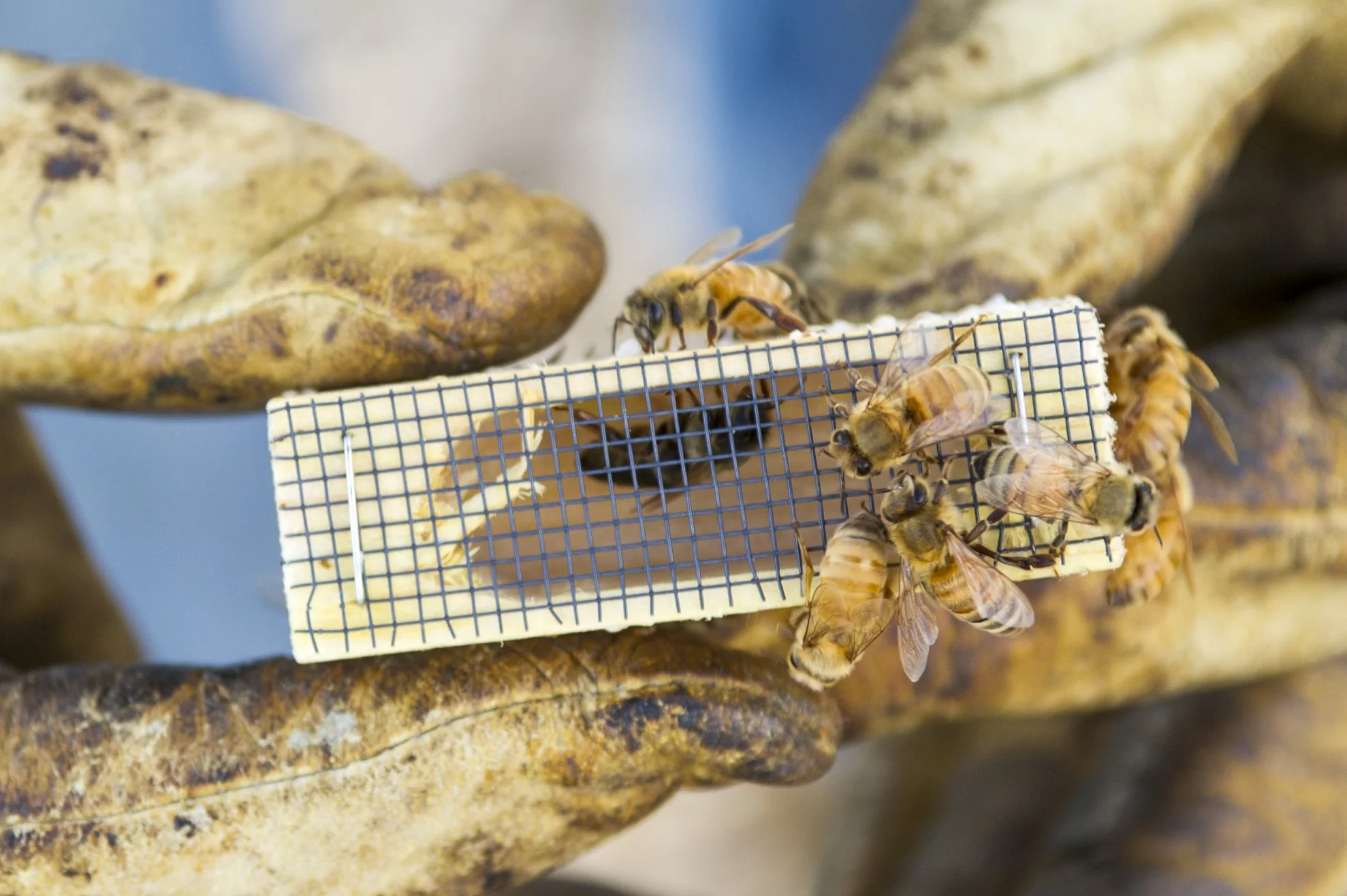
Photo by Kelly Gorham
The Bees’ Needs
By Audrey Schied
Exploring MSU’s Pollinator Garden
The MSU Pollinator Garden is a great boon for researchers looking to preserve Montana’s Bees
With the blooming of the spring season, Montana State University's Pollinator Garden flourishes with a colorful bounty of flora: from vibrant sunflowers, to velvety clusters of Lamb's Ear. The garden buzzes with life as honey bees visit flowers to collect nectar and pollen before returning to their bustling colonies. The Pollinator Garden offers a window into the inner workings of these colonies, allowing the community to see the activities of honey bees—from petals to hives.
"Many people haven't had the opportunity to look inside a bee colony and see how honey bees peacefully go about their routines to maintain colony health—like storing nectar and caring for young, developing bees. Honey bee colonies are exciting examples of biology that people can appreciate," said Michelle Flenniken, a PhD in microbiology and professor of virology at Montana State University. She established MSU's Pollinator Garden in 2013 with the goal of creating a resource for community outreach, and center for research. "It gives us a platform to discuss the importance of pollinators. We focus on the role of honey bees and pollination of food crops, but they also pollinate numerous other important plants and enhance biodiversity. The Pollinator Garden also provides habitat and forage for native and wild bees—including ground-nesting bumble bees."
“Honey bee colonies are exciting examples of biology that people can appreciate”
The garden is home to ten honey bee colonies, with approximately 400,000 individuals. With this thriving resource, researchers at MSU can study factors that impact the health of the United States' most important agricultural pollinators. “My main job is to conduct research that addresses important scientific challenges,” said Flenniken. “The Flenniken Lab is a team of people, including undergraduate and graduate students, who are addressing important agricultural challenges facing Montana, the U.S., and the world—including understanding the role of viruses and other factors on high annual losses of honey bee colonies.” These colonies in the Pollinator Garden help the Flenniken Lab investigate how viruses impact honey bees on a cellular, individual, and colony level.
"We obtain primary cells from honey bee larvae and pupa, and infect those cells in the lab with viruses," Flenniken explained. "As we understand the mechanisms and interactions between viruses and individual cells, we then ultimately extrapolate that interaction to the individual." Understanding the health of individual bees is critical to the overall survival of the colony; without a certain number of honey bees, it will die.
“The better we understand how viruses are transmitted, and how they impact the honey bee colony, the better we can develop strategies to help reduce colony losses that are associated with virus infection".
- Michelle Flenniken
Photo by Kelly Gorham
Bees also play a crucial role in agricultural production. In the U.S., the annual value of insect pollinations is estimated at 16 billion dollars. Montana is a particularly important beekeeping state—providing over 200,000 colonies annually for almond pollination in California’s Central Valley—and often ranking in the top five of honey-producing states. However, the past 14 years have consistently suffered high annual losses (averaging 38%) of honey bee colonies. "Beekeepers have been doing an excellent job maintaining our pollinators despite these high losses. By splitting their colonies more frequently, they can make up for the colonies that die," Flenniken explained. But, it still leaves us with what Flenniken calls the big question: what's causing these high losses in the first place?
"The better we understand how viruses are transmitted, and how they impact the honey bee colony, the better we can develop strategies to help reduce colony losses that are associated with virus infection," Flenniken said. One of the most recent studies from MSU's research found less viral transmission between bees in environments with higher floral diversity. Bees are generalist pollinators—meaning that they pollinate a variety of plant species. The researchers noted that when there’s greater floral diversity in a habitat, less overlap between bees on individual plants exists, resulting in less risk for viral transmissions. For example, thyme plants could be a valuable addition to diverse habitats. A recent MSU study determined that although thyme oil is toxic to bees, trace amounts activate the honey bee immune system, lowering viral levels.
The Pollinator Health Symposium was held in Norm Asbjornson Hall on April 21, 2022, to showcase the research of MSU graduate students, pollinator films, and local bee experts. The symposium is the most recent outreach effort to engage with the community regarding the importance of healthy pollinators. The Pollinator Garden also hosted the Peaks and Potentials event, “Honey Bee Investigators,” a summer class introducing middle-grade students to scientific investigations about honey bee health. The students learned college-level genetics and virology, and engaged in hands-on virus research as if they were part of the Flenniken Lab. From inspiring the next generation of scientists, to publishing groundbreaking agricultural research, the Pollinator Garden offers valuable tools for the Flenniken Lab's pursuit of sustainable solutions towards honey bee health.
Photo by Kelly Gorham


